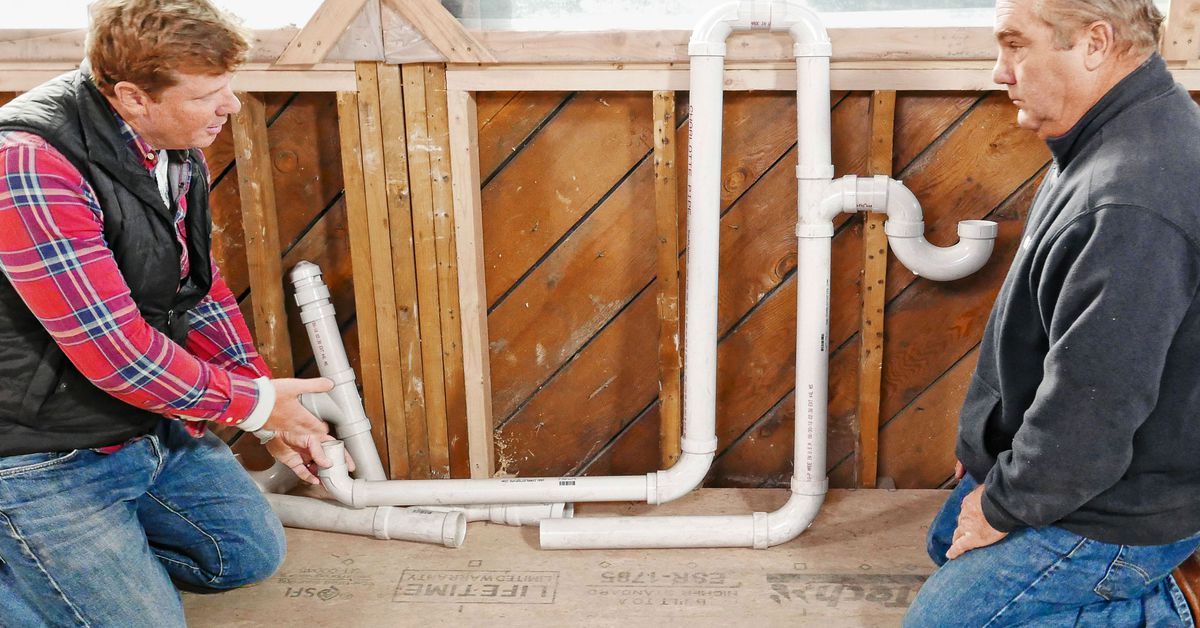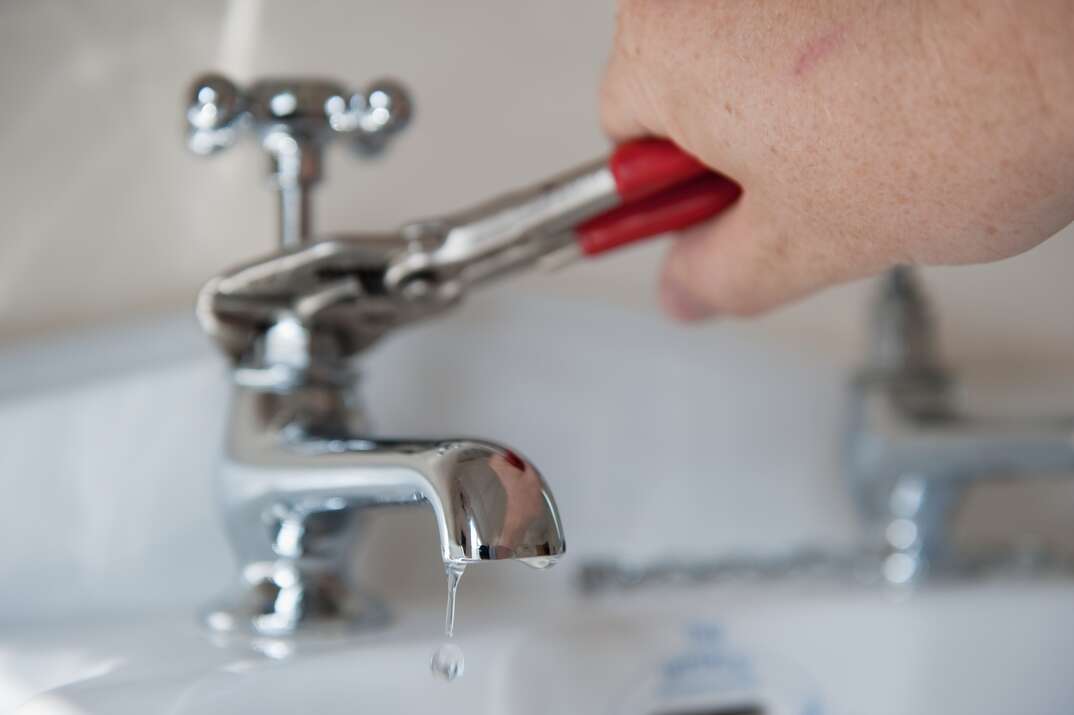Were you trying to locate advice on Why is My Home Making Strange Plumbing Noises?

To detect loud plumbing, it is very important to determine very first whether the unwanted noises occur on the system's inlet side-in various other words, when water is turned on-or on the drain side. Sounds on the inlet side have actually varied reasons: extreme water stress, worn valve as well as tap components, poorly connected pumps or various other appliances, improperly placed pipeline bolts, and plumbing runs consisting of a lot of limited bends or other limitations. Sounds on the drain side normally originate from poor location or, as with some inlet side sound, a design containing limited bends.
Hissing
Hissing sound that happens when a faucet is opened slightly typically signals excessive water stress. Consult your local public utility if you suspect this issue; it will certainly have the ability to tell you the water stress in your location and can mount a pressurereducing valve on the inbound water supply pipe if needed.
Various Other Inlet Side Noises
Squeaking, squealing, damaging, breaking, and also tapping typically are brought on by the expansion or tightening of pipelines, usually copper ones supplying hot water. The noises take place as the pipelines slide versus loosened fasteners or strike close-by house framing. You can often pinpoint the location of the issue if the pipelines are subjected; just comply with the sound when the pipelines are making sounds. More than likely you will certainly uncover a loose pipe wall mount or a location where pipelines exist so near to floor joists or other mounting pieces that they clatter against them. Attaching foam pipeline insulation around the pipes at the point of contact should remedy the issue. Be sure bands and wall mounts are safe and also offer sufficient support. Where feasible, pipeline bolts must be attached to large architectural aspects such as foundation wall surfaces as opposed to to mounting; doing so minimizes the transmission of resonances from plumbing to surface areas that can intensify as well as transfer them. If affixing bolts to framing is unavoidable, wrap pipelines with insulation or various other resistant material where they contact bolts, and also sandwich the ends of new fasteners between rubber washers when installing them.
Remedying plumbing runs that struggle with flow-restricting limited or numerous bends is a last resort that needs to be carried out only after seeking advice from a proficient plumbing service provider. Unfortunately, this situation is rather typical in older houses that might not have been constructed with indoor plumbing or that have actually seen several remodels, particularly by amateurs.
Babbling or Shrilling
Extreme chattering or screeching that occurs when a valve or tap is activated, and that generally vanishes when the fitting is opened totally, signals loose or faulty interior parts. The solution is to change the shutoff or tap with a new one.
Pumps and devices such as washing equipments and dish washers can move motor sound to pipelines if they are poorly attached. Link such items to plumbing with plastic or rubber hoses-never rigid pipe-to isolate them.
Drain Sound
On the drainpipe side of plumbing, the chief objectives are to get rid of surfaces that can be struck by dropping or rushing water and also to protect pipelines to consist of unavoidable audios.
In new building and construction, tubs, shower stalls, commodes, and wallmounted sinks as well as basins should be set on or against durable underlayments to lower the transmission of sound via them. Water-saving bathrooms and faucets are less loud than standard versions; install them as opposed to older kinds even if codes in your location still permit making use of older fixtures.
Drains that do not run vertically to the cellar or that branch right into horizontal pipeline runs supported at floor joists or various other mounting present specifically troublesome noise troubles. Such pipelines are huge enough to radiate significant vibration; they likewise lug substantial quantities of water, that makes the scenario worse. In brand-new building and construction, specify cast-iron soil pipelines (the large pipes that drain pipes commodes) if you can afford them. Their enormity contains much of the noise made by water travelling through them. Also, avoid routing drainpipes in wall surfaces shown to bedrooms and also areas where individuals collect. Wall surfaces having drainpipes should be soundproofed as was described earlier, using double panels of sound-insulating fiberboard as well as wallboard. Pipelines themselves can be covered with unique fiberglass insulation created the purpose; such pipes have an impervious vinyl skin (often consisting of lead). Results are not always adequate.
Thudding
Thudding noise, usually accompanied by trembling pipelines, when a tap or home appliance valve is switched off is a condition called water hammer. The noise as well as resonance are caused by the reverberating wave of stress in the water, which instantly has no location to go. Often opening a valve that discharges water rapidly into a section of piping consisting of a limitation, elbow joint, or tee installation can create the exact same condition.
Water hammer can generally be healed by mounting installations called air chambers or shock absorbers in the plumbing to which the issue valves or faucets are attached. These tools allow the shock wave created by the halted circulation of water to dissipate in the air they include, which (unlike water) is compressible.
Older plumbing systems might have brief upright areas of capped pipe behind walls on faucet runs for the same purpose; these can eventually loaded with water, minimizing or ruining their effectiveness. The treatment is to drain the water system completely by shutting down the primary supply of water valve and also opening all taps. Then open the primary supply shutoff as well as close the faucets one at a time, beginning with the faucet nearest the valve and also finishing with the one farthest away.
If Your Plumbing is Making These Sounds, There’s a Problem
A Bang or Thump When You Turn Off a Faucet
If a loud bang or thump greets you each time your turn off running water, you likely have a water hammer. A water hammer occurs when the water velocity is brought to a halt, sending a shock wave through the pipe. It can be pretty jarring — even worse, damaging to your plumbing system. All that thudding could loosen connections.
Strange Toilet Noises
You’re so familiar with the sounds your toilet makes that your ears will be attuned to anything out of the ordinary. Fortunately, most unusual toilet noises can be narrowed down to just one of several problems.
Foghorn sound:
Open the toilet tank Flush the toilet When you hear the foghorn noise, lift the float to the top of the tank If you’re ambitious, you can remove the ballcock valve and disassemble it to replace the washer. Or you can more easily replace the ballcock valve entirely. This device is relatively inexpensive and available at most any hardware store.
Persistent hissing:
The hissing following a flush is the sound of the tank filling. It should stop once the tank is full. But if the hissing continues, it’s likely because water is leaking out of the tank. The rubber flap at the bottom of the tank can degrade, letting water slip through and into the bowl. That’s why the tank is refilling continuously. Fortunately, this is an easy fix:
Cut the water to the toilet by closing the shutoff valve on the water supply line. Flush the toilet to drain the tank. Disconnect the flapper Attach the new flapper Gurgling or bubbling:
Gurgling or bubbling suggests negative air pressure in the drain line, likely resulting from a clog. As air releases, it causes the water in the toilet to bubble. This could either be a minor issue or a major one, depending on the clog’s severity. Clogs can be caused by toilet paper or more stubborn obstructions such as tree roots. If you can’t work out the clog with a plunger, contact a professional plumber for assistance because a clog of this magnitude could lead to filthy and unsanitary sewage backups in your sink bathtub.

We had been shown that report on Why Do My Plumbing Pipes Make A Knocking Noise from someone on a different web property. Those who enjoyed reading our blog entry plz don't forget to pass it around. Thank-you for going through it.
View Website